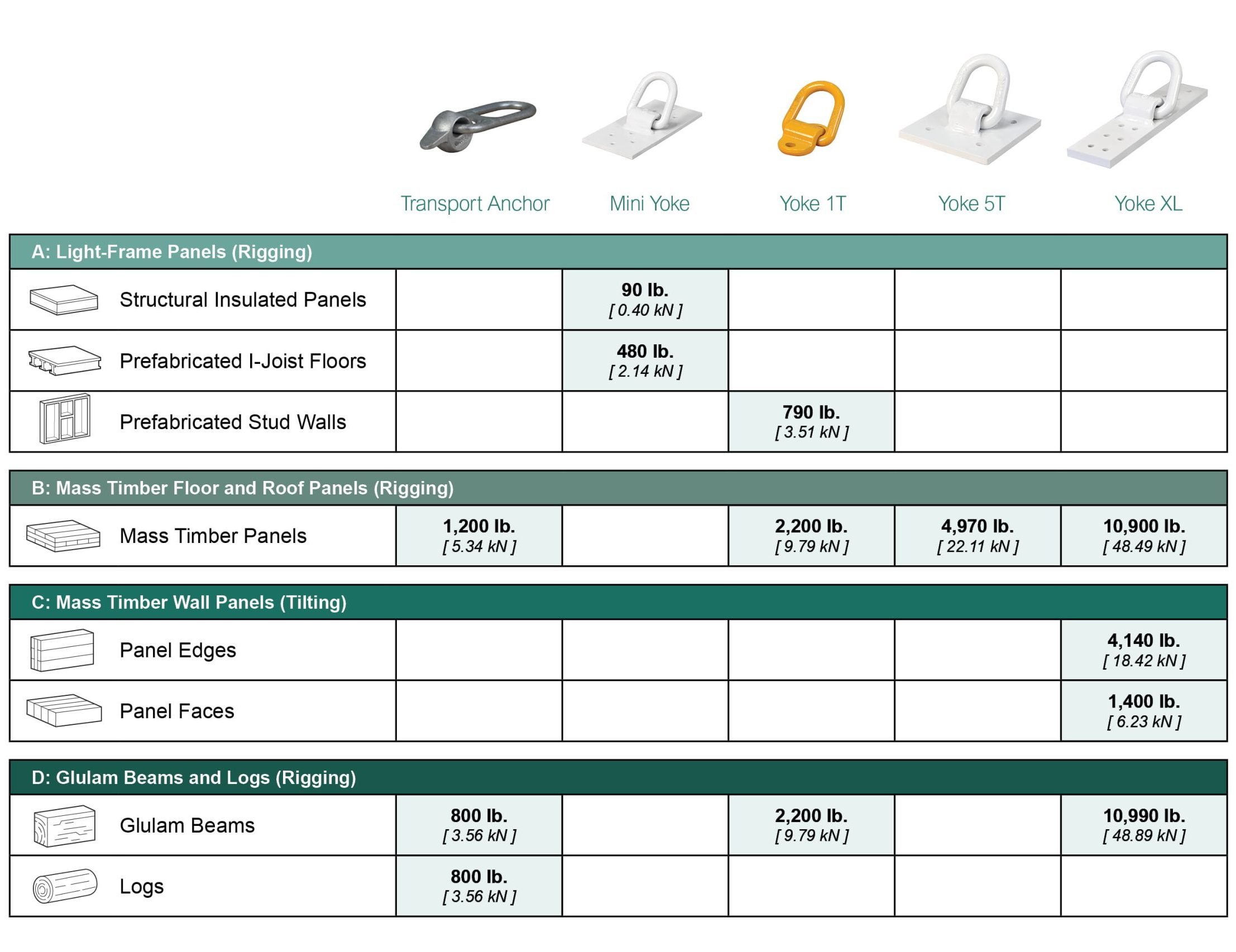MTC Solutions offers a variety of innovative rigging systems designed for efficient and safe rigging of mass timber elements. Installed with our high-performance, code-compliant ASSY self-tapping wood screws, these anchors meet, among others, OSHA, AMSE, and IHSA safety standards in the United States and Canada for hoisting and rigging products, incorporating proper factors of safety. These rigging solutions have been instrumental in the success of several prominent mass timber landmarks across North America.
Approximately 5-minute reading time.
MTC Solutions rigging systems comply with OH&S-15, RSST-S2.1 and IHSA regulations in Canada and OSHA regulations in the US on safety standards for hoisting/rigging products and feature proper factors of safety for system capacities. They have been used in many prominent mass timber projects across North America including the world’s first tall mass timber hybrid building, the Brock Commons Tall Wood Building.
Commonly Rigged Structural Wood Elements
The most common structural wood elements that require hoisting on construction sites are:
To meet different rigging needs, MTC Solutions distributes five distinct anchoring systems:

Figure 1. Recommended use scenarios for MTC Solutions rigging systems
These anchors are installed onto wood members with a selected range of ASSY self-tapping screws, chosen to ensure that no predrilling would be required for installation in any wood species, including Southern Yellow Pine (SYP). These high-performance, code-compliant fasteners significantly enhance on-site efficiency.
How to Select the Right Rigging Solution for Your Needs?
Once you have determined the total factored load to be lifted, it is time to choose the appropriate rigging device. It is also important to select the right number of anchors to be used to lift structural elements, which depends on multiple factors, including, but not limited to, their type, weight, and dimensions, as well as the type of crane used.
For example, two anchors are commonly used to tilt up CLT wall panels, while lifting floor or roof panels generally requires four anchors. In scenarios involving more than two anchors, accurately determining the load on each anchor can become challenging due to the uncertainties associated with the symmetry of load distribution, which impacts the number of anchors in effect. To calculate the load capacity of an anchor assembly (a hitch) and ensure on-site safety, please refer to your licensed rigging professional.
To simplify the selection process, the section below presents an overview of frequently encountered structural wood members with their recommended rigging solutions and maximum single-anchor capacities. Feel free to reach out to our Technical Support Team if you have any questions.
Disclaimer: All values presented in the table below are the maximum factored capacity per anchor used while rigging and do not indicate the maximum weight of structural wood members that can be lifted.

For lifting prefabricated I-joist floor panels, weighing up to 1,920 lb., and SIP roof panels, up to 360 lb., the Mini Yoke is an ideal choice, combining lightweight design with a speedy attachment achieved with shorter screws. For prefabricated stud walls up to 3,160 lb., the Yoke 1T would be the recommended solution.
The Yoke XL is a solution specifically designed and tested for tilting mass timber walls, providing a safe and reliable option for up to a factored weight of 8,280 lb., when installed on the edge side of MPP or CLT panels.
Mass Timber wall panels and glulam beams, based on weight and dimension variations, can be tilted up and lifted with more than 2 anchors. The maximum weights supported in such scenarios would be different from the values presented above.
How to Work with Us?
At MTC Solutions, we provide top-notch technical support to help you choose the right tools for your projects, and here is how it works.
Interested in learning how to install these products safely? Check out our YouTube channel playlist on rigging, covering all details you need to know!
And if you have any questions about our rigging systems or need help with rigging planning, contact our Technical Support Team 😉
Register for a Technical Learning Session
Sign up for MTC Newsletter and keep up to date with all our progress.